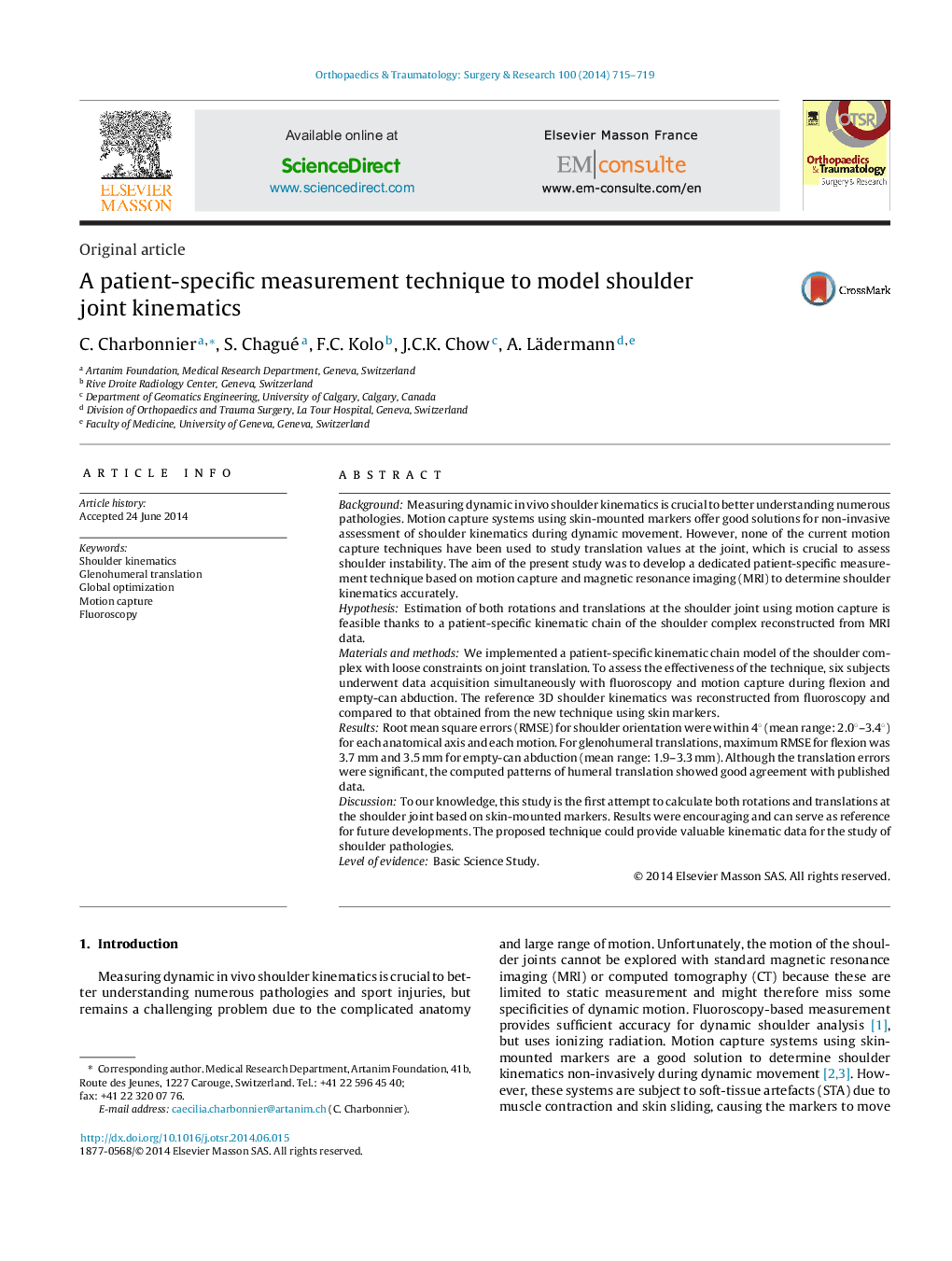| کد مقاله | کد نشریه | سال انتشار | مقاله انگلیسی | نسخه تمام متن |
|---|---|---|---|---|
| 4081401 | 1267591 | 2014 | 5 صفحه PDF | دانلود رایگان |
BackgroundMeasuring dynamic in vivo shoulder kinematics is crucial to better understanding numerous pathologies. Motion capture systems using skin-mounted markers offer good solutions for non-invasive assessment of shoulder kinematics during dynamic movement. However, none of the current motion capture techniques have been used to study translation values at the joint, which is crucial to assess shoulder instability. The aim of the present study was to develop a dedicated patient-specific measurement technique based on motion capture and magnetic resonance imaging (MRI) to determine shoulder kinematics accurately.HypothesisEstimation of both rotations and translations at the shoulder joint using motion capture is feasible thanks to a patient-specific kinematic chain of the shoulder complex reconstructed from MRI data.Materials and methodsWe implemented a patient-specific kinematic chain model of the shoulder complex with loose constraints on joint translation. To assess the effectiveness of the technique, six subjects underwent data acquisition simultaneously with fluoroscopy and motion capture during flexion and empty-can abduction. The reference 3D shoulder kinematics was reconstructed from fluoroscopy and compared to that obtained from the new technique using skin markers.ResultsRoot mean square errors (RMSE) for shoulder orientation were within 4° (mean range: 2.0°–3.4°) for each anatomical axis and each motion. For glenohumeral translations, maximum RMSE for flexion was 3.7 mm and 3.5 mm for empty-can abduction (mean range: 1.9–3.3 mm). Although the translation errors were significant, the computed patterns of humeral translation showed good agreement with published data.DiscussionTo our knowledge, this study is the first attempt to calculate both rotations and translations at the shoulder joint based on skin-mounted markers. Results were encouraging and can serve as reference for future developments. The proposed technique could provide valuable kinematic data for the study of shoulder pathologies.Level of evidenceBasic Science Study.
Journal: Orthopaedics & Traumatology: Surgery & Research - Volume 100, Issue 7, November 2014, Pages 715–719
